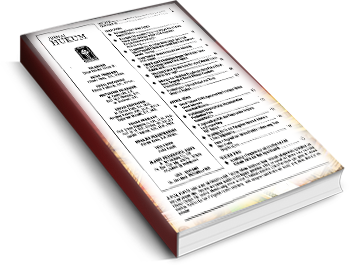Main Article Content
Abstract
with the interest of capital owners. Finally, the society hope, in this reformation era, that their rights on the land can be certainly legalized through the enforcement process of socity rights on land.
Article Details
Authors who publish with this journal agree to the following terms:
a. Authors retain copyright and grant the journal right of first publication with the work simultaneously licensed under a Creative Commons Attribution License that allows others to share the work with an acknowledgement of the work's authorship and initial publication in this journal.
b. Authors are able to enter into separate, additional contractual arrangements for the non-exclusive distribution of the journal's published version of the work (e.g., post it to an institutional repository or publish it in a book), with an acknowledgement of its initial publication in this journal.
References
- Daftar Pustaka
- Hermawan Sauni (ed) 1998. Parlindungan
- Hukum Agraria, Beberapa Pemikiran
- dan Gagasan. Medan: USU.
- Bud! Harsono. 1994. HukumAgraria; Sejarah
- Pembentukan UUPA Isi dan
- Pelaksanaannya. Jakarta: Djambatan.
- Hadisuprapto. 1977. ikbtisarPerkembangan
- Hukum Tanah DIY. Yogyakarta: Karya
- Kencana.
- Maria R Ruwiastuti, dkk. Penghancuran Hak
- MasyarakatAdat atas Tanah. Bandung:
- INPI-PACT.
- Jawahir Thontowi. "Reformasi dan Kompilasi
- Peraturan Hukum Kerukunan antara
- Umat Beragama." di dalam Hanafi
- Sofyan. 1995. Indonesia dalam
- Transisi: Canbera: Halmahera
- Fondation. Him. 168.
- Suprapto Hadimulyo. 1999. "Kebijaksanaan
- Pertanahan dalam era Reformasi."
- Makalah Kuliah Umum Fakultas
- Hukum Ull.
- Selo Soemardjan. 1984. "Landreform di
- Indonesia". Dalam Sediono S.P.
- Condronegoro. 1984 Dua Abad
- Penguasaan Tanah, Pola Penguasaan
- Tanah Pertanian di Jawa, Dari Masa
- ke Masa. Jakarta: PI Gramedia.
- Badan Pertanahan Nasional. Jakarta:
- Dasawarsa Bhumi Bhakti Adhiguna.
References
Daftar Pustaka
Hermawan Sauni (ed) 1998. Parlindungan
Hukum Agraria, Beberapa Pemikiran
dan Gagasan. Medan: USU.
Bud! Harsono. 1994. HukumAgraria; Sejarah
Pembentukan UUPA Isi dan
Pelaksanaannya. Jakarta: Djambatan.
Hadisuprapto. 1977. ikbtisarPerkembangan
Hukum Tanah DIY. Yogyakarta: Karya
Kencana.
Maria R Ruwiastuti, dkk. Penghancuran Hak
MasyarakatAdat atas Tanah. Bandung:
INPI-PACT.
Jawahir Thontowi. "Reformasi dan Kompilasi
Peraturan Hukum Kerukunan antara
Umat Beragama." di dalam Hanafi
Sofyan. 1995. Indonesia dalam
Transisi: Canbera: Halmahera
Fondation. Him. 168.
Suprapto Hadimulyo. 1999. "Kebijaksanaan
Pertanahan dalam era Reformasi."
Makalah Kuliah Umum Fakultas
Hukum Ull.
Selo Soemardjan. 1984. "Landreform di
Indonesia". Dalam Sediono S.P.
Condronegoro. 1984 Dua Abad
Penguasaan Tanah, Pola Penguasaan
Tanah Pertanian di Jawa, Dari Masa
ke Masa. Jakarta: PI Gramedia.
Badan Pertanahan Nasional. Jakarta:
Dasawarsa Bhumi Bhakti Adhiguna.




